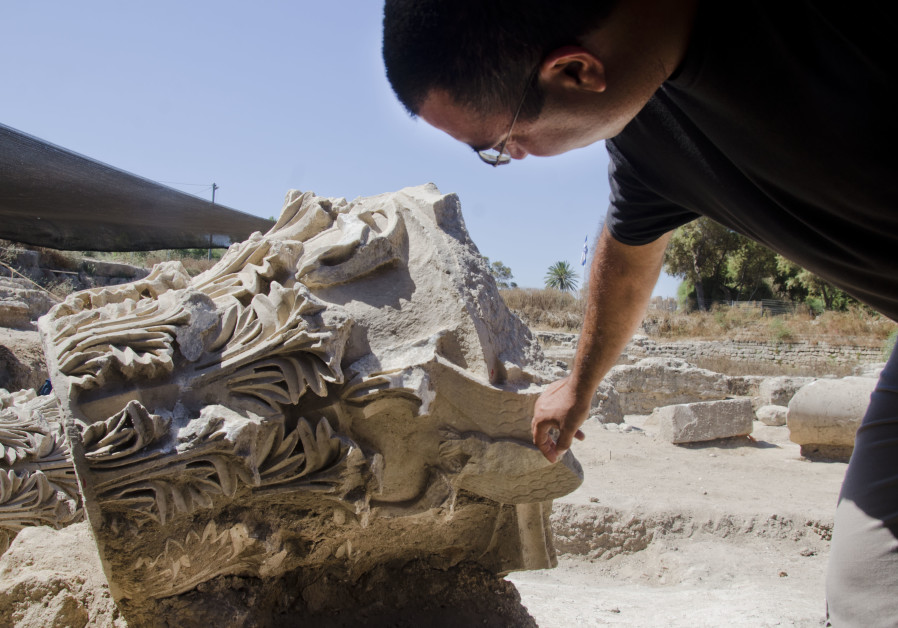The remains of a 2,000-year-old basilica, the largest in Israel, were uncovered in Ashkelon in an excavation conducted by the Israel Antiquities Authority within a development project of the Tel Ashkelon National Park, the Nature and Parks Authority announced on Monday.
The building, a Roman public building, was divided into three sections, a main hall and two side parts. According to the archaeologists, the main hall was surrounded by marble columns as high as 13 meters and ornated with elaborated capitals.
“The basilica was first discovered in the 1920s by British archaeologist John Garstang who then covered it once again,” said Dr. Rachel Bar Nathan, IAA director of excavation together with Saar Ganor and Federico Kobrin.
 Archaeologist Saar Ganor with a capital in Tel Ashkelon National Park. (Credit: YOLI SHWARTZ ISRAEL ANTIQUITIES AUTHORITY)
Archaeologist Saar Ganor with a capital in Tel Ashkelon National Park. (Credit: YOLI SHWARTZ ISRAEL ANTIQUITIES AUTHORITY)
The area would not be excavated again for almost a century, until a few years ago the works started one more time. Among other things, a small theater (odeon) was uncovered.
When the National Park Authority decided to develop the area and reconstruct part of the colonnade, the excavations began once again.
“Garstang had already calculated the dimensions of the building, and seeing the remains of the marble columns, made with materials imported from Asia Minor, he had suggested that the basilica dated back to the time of Herod The Great, since historian Josephus described how the king built a colonnaded hall,” Bar Nathan said.
cnxps.cmd.push(function () { cnxps({ playerId: ’36af7c51-0caf-4741-9824-2c941fc6c17b’ }).render(‘4c4d856e0e6f4e3d808bbc1715e132f6’); });
if(window.location.pathname.indexOf(“656089”) != -1){console.log(“hedva connatix”);document.getElementsByClassName(“divConnatix”)[0].style.display =”none”;}
“Our project started in 2016,” she noted said. “When we excavated the basilica we realized that that some of the remains did not date back as early as Herod, but later to the 2nd-3rd century CE the time of emperor Septimius Severus, but the original structure did date back to the time of Herod, so Garstang was right.”
The archaeologists found a coin from Herod’s times at the site.
Septimius Severus rebuilt the structure in an even more grandiose style. Several sculptures were also found.
In Roman times, the basilica was not a religious building, but rather a public building in the center of the city, used for commerce, court cases and other civic functions. Later on, Christian churches would be inspired by this architectural structure.
When Herod rule over Judea, Ashkelon was a free city. A Jewish population live there but did not represent the majority. Later it became a Roman city, before it was destroyed by an earthquake in 363 CE.
The excavation is part of a joint project by the Nature and Parks Authority, the Ashkelon Municipality and the Leon Levy Foundation to preserve and restore the theater and the basilica and make them accessible to visitors.
